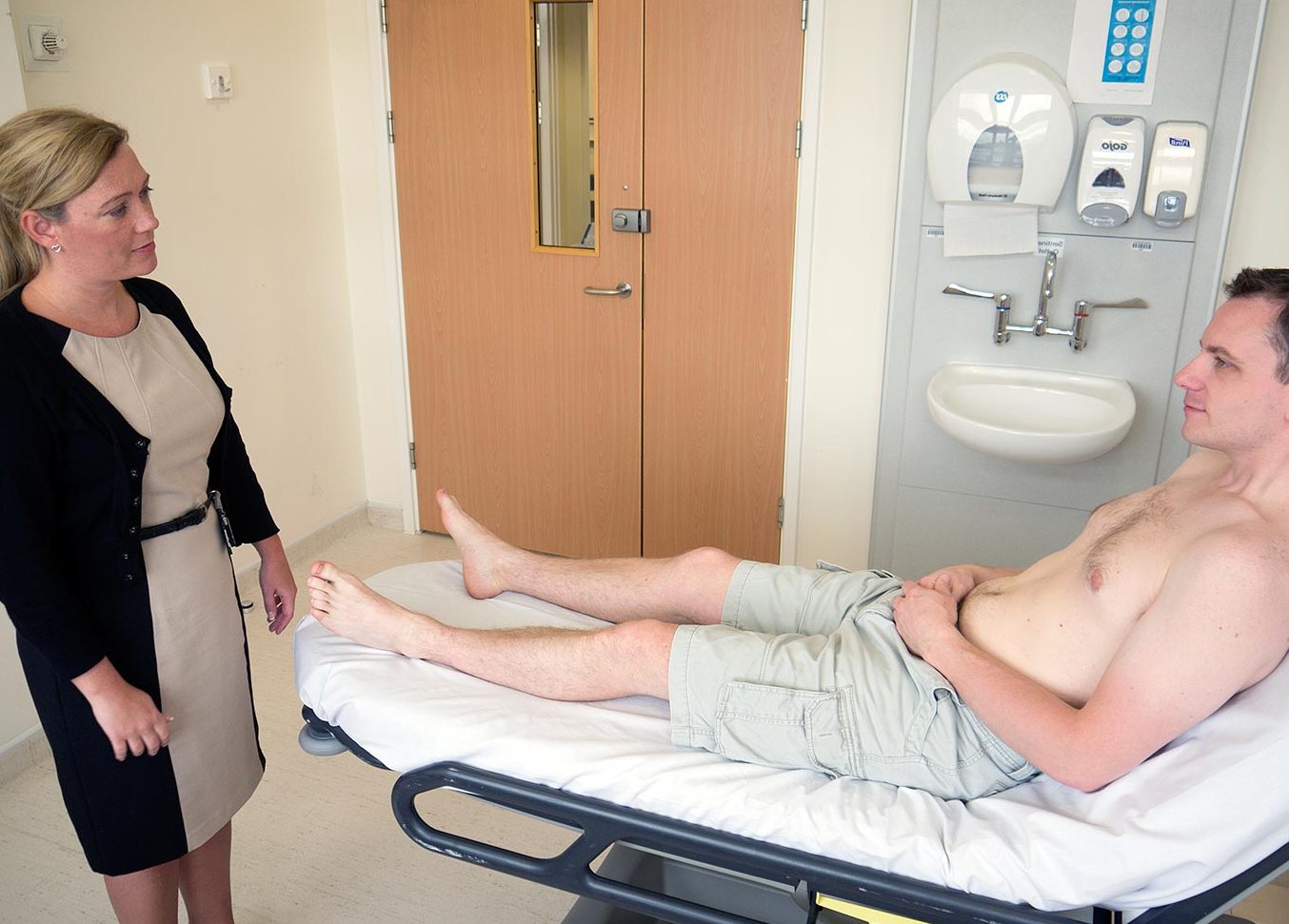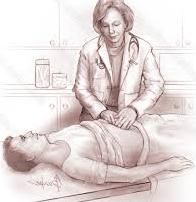
There are many skills needed for abdominal examination. The process of inspection is followed by percussion, auscultation, and palpation. These processes can distort normal abdominal sounds. Medical practitioners must have excellent knowledge of abdominal organs and anatomic placement to differentiate normal and expected findings from the abnormal ones. Inspection occurs at a time during the examination.
The abdominal cavity is part of the trunk that is direct below the thoracic cavity and diaphragm to the region of the pelvic cavity. The cavity contains major organs of  digestion and pelvic cavity houses internal reproductive organs, the urinary bladder, and digestive tract. During infancy, the bladder is one of the abdominal organs.
digestion and pelvic cavity houses internal reproductive organs, the urinary bladder, and digestive tract. During infancy, the bladder is one of the abdominal organs.
Inspection
You need to inspect contour of the abdomen while the kid is supine and erect. Usually, the infant abdomen is in an erect position and quite cylindrical. It is quite prominent of physiologic lordosis of the spine.
The tone and size of abdomen provides an indication of general muscular development and nutritional status. A prominent, large, and flabby abdomen is seen in children suffering from obese. However, you need to make careful note of a protruding abdomen with extremities and flat.
Medical practitioners also note the condition of the skin that covers the abdomen. It needs to be uniform, without creases or wrinkles. You may notice some silvery or whitish striae can be seen if the skin is stretched by obesity. The other thing that is observed is abdominal movement. Also, excessive hair distribution, any scars,  distended veins, and ecchymotic areas are noted. A doctor can also observe pulsation of the aorta.
distended veins, and ecchymotic areas are noted. A doctor can also observe pulsation of the aorta.
For children below the ages of 8 years, breathing is abdominal. If it fails during respiration, these may be signs of serious abdominal problems. Moreover, if thoracic muscles fail to move, pulmonary problems may result if abdominal movement causes it. You should note that abdominal and chest movements are synchronous.
Auscultation
All the four quadrants are auscultated using bell chest pieces and diaphragm. Other than listening to lungs or heart, to get bowel sounds, you need to press firmly against the abdominal surface. Peristalsis is the most important sound. The sound is similar to gurgles or short metallic clicks. This sound can be heard every 15 to 30 seconds. There are many other sounds, which can be heard in your abdominal cavity. There are some types of sounds, which are referred for evaluation. Such sounds include hums, rubs, or bruits.
